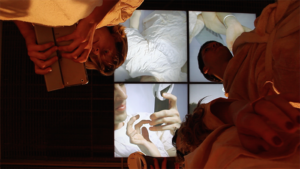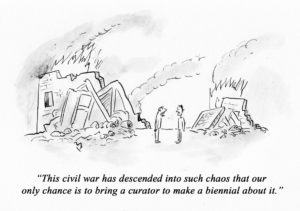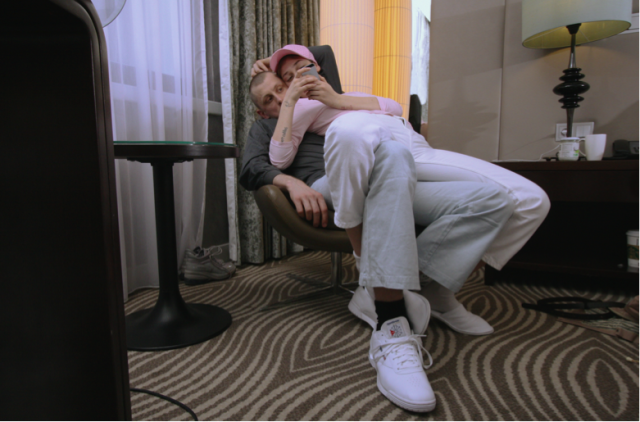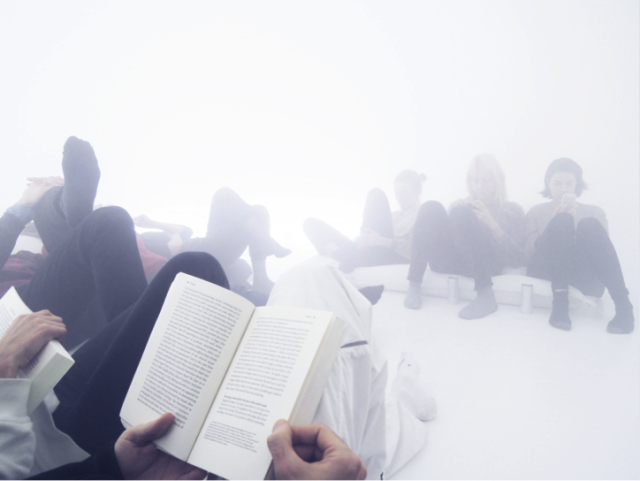“Ai extended organs: mind (google docs), imagination (tumblr, instagram), sound (soundcloud), language (facebook, twitter), correspondence (gmail).”
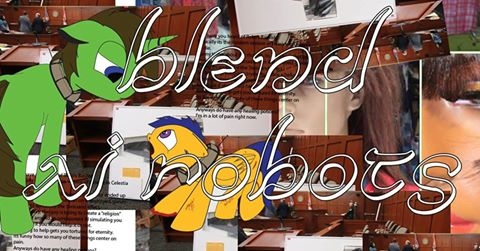
Agatha Valkyrie Ice was first introduced to me a few years ago, while sitting in a coffee shop in Neukölln, Berlin. I had met Dorota Gawęda and Eglė Kulbokaitė to discuss their project Young Girl Reading Group, which at the time was being held in their apartment in the same neighbourhood each Sunday. As we sat drinking coffee we dissected Tiqqun’s identity, a far-left French philosophical journal whose anonymous collective of writers authored Preliminary Materials for a Theory of the Young-Girl, examining the impossibility of love under neoliberalism in catchy excerpts. The book uses the notion of ‘The Young-Girl’ to represent the model citizen and total product of a consumer society. Gawęda and Kulbokaitė took the same title to indoctrinate their reading group practice as a critical backlash was gaining momentum against the Young-Girl concept. It was alleged that Tiqqun’s use of the term adhered to the gendered idea that anything femme was synonymous with unconscious capital, thus reinforcing conventional misogynistic tropes. It raised questions about how neutral these anarcho-writers’ concepts really were.
The conversation seamlessly wove this discussion with Gawęda and Kulbokaitė’s then new project, called Agatha Valkyrie Ice (aka ‘Ai’), who had started as a Google Doc of an open-source personality, that offered a space for communal authorship of female and marginalized groups to materialize through a critically inclusive practice. Agatha seemed the perfect foil for Tiqqun’s Young-girl. Watching her morph and manage personalities and textures over the coming years, she was always critical but never explicit. What is unique about Ai and perhaps also where Ai becomes almost too perfect, is the consistency of its output. Resulting in collective exhibitions, a Soundcloud, Google Docs and Facebook profiles, dealing with ideas around gender, authorship and the body over multiple platforms, users, performers and sites — Agatha always seems seamless, she is never flawed in public.
Ai showed far greater potential in its products than one could have imagined. Recently, MIT Technology Review suggested that AI (Artificial Intelligence) is very much a recognised technological output now, and that deep learning as a form can be physically proven. As example from last year, a self-driving car was released onto the quiet roads of New Jersey. Unlike others demonstrated by Google, Tesla or General Motors, this one was unique in the fact it didn’t take a single instruction from an engineer or programmer during its drive time. Instead, it relied entirely on an algorithm it had taught itself by watching humans drive. An impressive feat, but what’s bizarre is that no human can quite explain how it does it. No human can quite explain every possible aspect of their own behaviour either. Sometimes we behave instinctually, subconsciously or erratically, which has a lot to do with our environment at a given moment.
For the last two years Agatha has also been developing in response to her environment. Ai’s wasn’t the suburbs of the United States’ east coast but an art space in Basel, Switzerland, called Oslo 10. Awarded by the Christoph Merian Stiftung Foundation, the bursary is given to a curatorial project every two years, and between April 2015 and April 2017 it has been Agatha’s home. The co-working team that applied to run it was naturally Gawęda and Kulbokaitė, who also enlisted Ana Andra, Zayne Armstrong, Elin Gonzalez and Aaron Ritschard with the aim of manifesting the abstraction of Ai’s house in the gallery, in the outlandish style of the MTV Cribs reality TV show but within the history of art. The surreal, ironic and highly academic environments they created over this time is impressive for six people who worked over an epic programme of on- and offline identities. As Agatha’s ‘Crib’ came to a close, with Final Episode: Exit on April 8, I caught up with the team over a Google Doc, Facebook Messenger and brief conversation as we bumped into each other during the frenzied week of Documenta 14 in Athens.

** I was first introduced to Agatha, maybe two or three years ago. Since then she has morphed and maxed her performance and output. How did you all get to know her or materialize with her?
Elin Gonzalez: I was approached by Egle and Dorota about three years ago to embody Agatha on Soundcloud. Since the idea was about this open access personality I wanted other people to contribute so that each one of them would help building Agatha’s identity
Ana Andra: Agatha was an idea from [D&E]. I only started to understand the idea of creating Agatha when we got this possibility to have Ai ‘house’ at Oslo10. I had got to know many interesting artists who had contributed to Agatha. It was an interesting experience of developing with the group at the beginning and also with external people, who didn’t know if Agatha was real or not.
Egle Kulbokaite: Agatha was created first and foremost as an on-going film script in Google Doc format that continued growing with each of Agatha’s participation whether it was an exhibition or a score for a performance piece. The script was laid out through the metaphoric structure of the house viewing akin to MTV cribs. Thus, Agatha’s becoming as well as body could be understood through the space Ai inhabits.
Aaron Ritschard: Oslo 10 was to materialize the by then only virtually existing Agatha Valkyrie Ice by creating Agatha’s house. We wanted to guide the viewer through one room in each exhibition like in MTV cribs, our exhibitions were called episodes.

** The ‘body’ entwining with the Technology features heavily in Agatha’s prelude on the website, but Agatha also articulates key political ideas on post-gender and networks
AR: The term Ai that Ana mentioned was our tool to communicate post-authorship, which was one of the key-concepts introduced by our curator Agatha Valkyrie Ice. Agatha would be embodied by anybody who acts in Agatha’s name. Ai, standing for me, you, we, it’s, yours, ours etc. dissolves borders between individuals and transforms the physical author to an unidentifiable phantom.
** So it was more about cross-global authorship that could come together on-site in Basel? Combining URL to the IRL?
EK: Through the social media profiles like FB, Soundcloud, etcetera. we wanted to write an IRL sci-fi story, underlining links between and indeterminacies of virtual and real, singular and plural … Basel was feeding into URL as much as the digital responses were shaping the unfolding story of Agatha.
Dorota Gaweda: We were aiming at exploring how the relationship between body and space is created and how the meaning is inscribed within human, architectural and virtual bodies. We wanted to consider space as a surface, a permeable space of memory, imagination and affect, imagining it as a primary form of habitation that could potentially redefine the relationship between inside/outside, virtual/real, female/male, etcetera. URL and IRL were therefore interweaving actual locations, and it was important for us to address that within our programming of the space.

** And how was that working as one Ai but living as a group of people — like a singular celled commune?
EK: Thinking Agatha and thinking collectives we were very much influenced by the writing of such authors as Donna Haraway among many. We aimed at bringing into the collective what Haraway called tentacular thinking in her recent book Staying with the Trouble:
“The tentacular are not disembodied figures; they are cnidarians, spiders, fingery beings like humans and raccoons, squid, jellyfish, neural extravaganzas, fibrous entities, flagellated beings, myofibril braids, matted and felted microbial and fungal tangles, probing creepers, swelling roots, reaching and climbing tendrilled ones. The tentacular are also nets and networks, it critters, in and out of clouds.”
AR: We were not like a commune, we were like a swarm.
AA: A swarm indeed.
** What does a Swarm’s conceptual framework in reality look like?
EG: When we decided to apply for the space, we thought about working under Agatha Valkyrie Ice. We saw it as a good facilitator to bring such a heterogeneous group in some sense together. So that was the basic idea for how we started the project and mainly the first two shows here in Basel. We developed all the works together and made all the curatorial decisions as a group. Later on, we worked more or less independently for each show, forming smaller curatorial groups, either fluidly in between the group or with curators from outside, like Luca Beeler, Cathrin Mayer, Florentine Muhry or Daniel Iinatti.

** You also hosted a number of online components too right — web residencies etcetera?
DG: For us, the online Oslo10 was always equally important to the actual Oslo10 in Basel. In parallel to the programming in the space, we have hosted a number of web residencies by various artists, Xenoestrogens by Juliette Bonneviot, Club Mirage by Kareem Lotfy, Blunt x Skensved or our most recent TLA_Mountain by Eloïse Bonneviot, to name a few. I think that throughout the two years the space has shown some really great online works. With some of the exhibitions we also tried to embrace the live-stream performative format for openings, here I mean some of the YGRG events and exhibitions such as Radical Togetherness by Anna and Esben Weile Kjær and PROJET 3 by Fritz Schiffers and Joshua Horeau. One of the most notable projects in my mind was the one proposed by BluntXSkensved where the artists simply hid www.oslo10.ch from view by moving the contents into the dark web.The regular contents of the website was only accessible through an encrypted network, so to find any information about the space you needed to download and launch the TOR Browser. This happened during Art Basel time, when all the local spaces compete for both the online and offline attention of the art crowd.
** The idea of the domestic and the unreachable seem to be ongoing in the curatorial program.
AR: Agatha started with a virtual body, with social media accounts as organs. So in a sense, each episode did not represent only a room, but actually a body part. Every specific room relates to a specific function and being of the human body. In the corridor, the body passes random other bodies. In the toilet the body empties. In the bathroom, the body cleans its surface. The body is represented in the rooms, your house is your body.

EG: The curatorial programme and the body idea resonated the most in the first two episodes I think, which we organized all together. Since the initial curatorial basis was to build a house for Agatha, room after room, we thought about the rooms in relation to what we saw as their counterparts in a ‘human’ body. The first show was the entrance, but it was also kind of Agatha’s birth (in Basel, not generally), since all life on earth started in the oceans. You have the entrance, and also the beginning, you have water as material, which works like a reflective skin, taking any shape you want it to have.
** Were there any moments that stand out in the last two years, that you felt really effectively pushed your theoretical ideas into visual entities?
AR: For me, the work eat me by Puppies Puppies reflected our ideas on the level of body/virtuality, post-authorship, and post-humanity. As the artist like Ai evades the idea of the person-artist. Puppies Puppies as an artists name is read as non-human, non-singular, post-gender. The artwork was based on an image taken out of the internet and depicted a meat buffet in shape of a human. So we grilled a lot of dead animal meat, incorporated a living human’s head in the buffet and added zombie-hands. When the work was done we sent PP an image to have PP confirm authorship. I think PP is vegetarian.
** Where will Agatha go from here?
DG: Agatha has been created as an experiment. From its conception in 2014 and onwards, Egle and I have always tried to find new iterations of the project. Oslo10 was one such opportunity where we attempted to implement a different mode of curating (together with Elin, Aaron, Ana and Zayne). As an experiment towards the alternate language and understanding of gender, defining one’s own personality in relation to the surrounding communities, Agatha was lead to evolve from a fictional postgender character confined framework of social media platforms, to an artistic strategy exploring contemporary parallels in identity and artistic production. All the projects within the Agatha Valkyrie Ice framework were striving towards a materialisation of a subjectivity which, although derived from the virtual, attempts at describing a possibility of an assemblage of agencies.

The avatar has proven to have had a multitude of pragmatic uses: Agatha was a companion species, here to think with and to invent a body and a sexuality of one’s own. Agatha Valkyrie Ice also functioned as a framework for our practice and was an embodiment of the many preoccupations within. Both Egle and I believe that by now the project has reached its creative limits. In the coming months we would like to go back to its roots and revisit the film script.
EK: The Google Doc format allowed continued growth with each of Agatha’s participations, whether it was an exhibition or a score for a performance piece, whether Oslo10 or not. This film script is an archive of Agatha’s becomings. For nearly three years now, we have gathered a bulk of text and visual material that we see as key to our practice and understanding of the totality of the Agatha Valkyrie Ice project. In Agatha Valkyrie Ice — The Death of an Avatar, produced for the exhibition Riverside/RUST/The Mycological Twist (2015) initiated by Eloïse Bonneviot and Anne de Boer and Agatha Valkyrie Ice: Perma-permadeath (2016) performance commissioned by LISTE art fair alike — the avatar meets Ai end. The Mycological Twist aimed at creating an alternate community in the survival computer game RUST, but was also the site of the burial of Agatha Valkyrie Ice, while the LISTE performance was an IRL take on the choreographies of the game. Both pieces in our view marked an end to the development of the online personality and a shift towards extrapolating Agatha as a project in a more critical sense.
DG: Although there is a multiplicity of possible uses, opening up pathways to new forms of expression and blurring authorship, another way to see the process of becoming-avatar is as a voracious point and tool of erasure, be it of female artists or other marginalised subjects. The open-ended, cloud-based film script that has been a compendium of all Ai activity, a diary and a theoretical treatise on becoming real and becoming virtual: comprising performance, talks, sound works, sculpture within its textual form. For Egle and I, AVI is also a source book on which we will want to reflect in our coming projects.**
Agatha Valkyrie Ice’s Final Episode: Exit was on at Basel’s Oslo 10, April 8, 2017.
share news item
